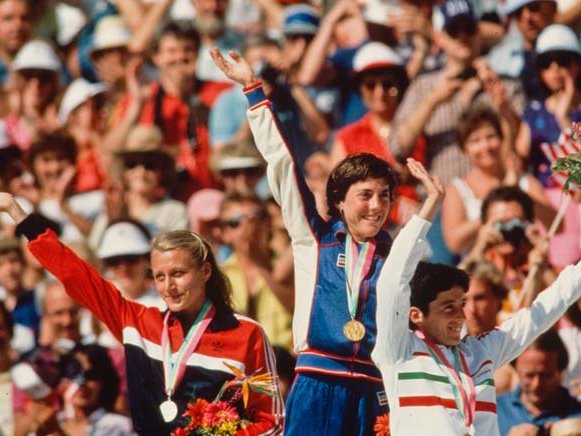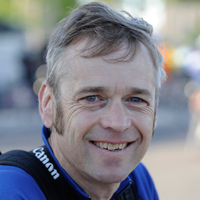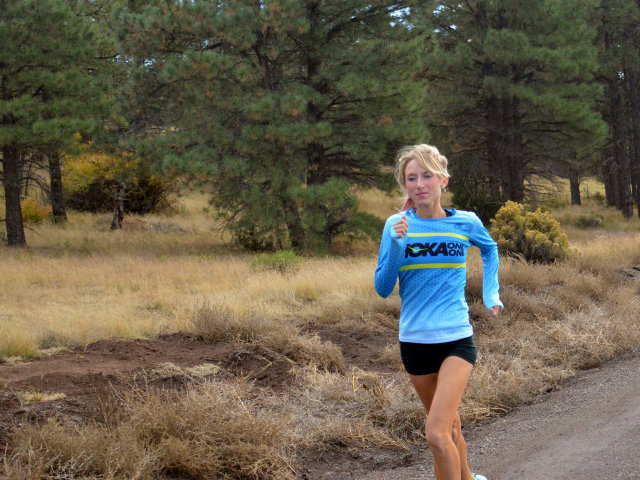Many runners quickly forget the promises they make to themselves, under duress, near the finish line of a marathon.
Joan Benoit Samuelson is not among them.
Running through a dark tunnel, to the sunlight in the Los Angeles Coliseum, on her way to winning the first women's Olympic Marathon, Samuelson pledged to give back to the sport and the people who gave so much to her.
She's maintained that promise for nearly three decades, rolling from the finish line of one pursuit to the start line of the next, encouraging others to follow her lead.
The philosophy "There is No Finish Line" is as more her life guide than an advertising tag line for Nike. It's also the title of a documentary on Samuelson that will be shared on Wednesday night when she appears in Milwaukee to launch the Lakefront Marathon weekend.
Samuelson's story is one of an icon, a champion, a forerunner and an activist. She entered the sport on the wings of Title IX and changed it forever.
"I think Joan and people like her showed women there was a place for us," said Kris Hinrichs, the Lakefront Marathon race director.
Women who never imagined they could run 26.2 miles, or even two, now had a role model, a face to follow, Hinrichs said.
"She put women's running on a platform that was much more equal, and women saw that, men saw that, and race directors saw that," she said. "Over time, the sport has changed and it changed for the better."
When she won the 1979 Boston Marathon, at 21, and raced into the national spotlight, only seven women joined her on the start line in Hopkinton.
Samuelson set an example, and thousands followed.
In 2012, more than 9,000 women filled the start corrals in Boston.
In a broader measure of progress, women represented 41% of the roughly 508,000 marathon finishers in the U.S., in 2011, according to the data from Running USA.
The Lakefront Marathon has been part of the change. In 1983, the year before Samuelson's Olympic victory, women accounted for 7% of the finishers in Milwaukee. In 2011, they represented 45% of those at the finish line in Veteran's Park.
Breaking barriers, setting records and leading women into a life-changing sport are all part of Samuelson's story. She continues to travel and inspire, so she can hear the stories of others.
"The most inspiring stories come at the back of the pack, people who have come to our sport who never thought they could run in a race, and they find a lot of empowerment," Samuelson said. "I hear these stories and that continues to inspire me."
The attention that Samuelson generated with her landmark victory in Los Angeles was unsettling. Yet, Samuelson never backed away from the promise she made in that tunnel, and has fiercely carried on as a role model for her gender.
She ran a 2:49:08 in the U.S. Olympic Marathon Trials in 2008, and 2:47:50 in the 2010 Bank of America Chicago Marathon. Now 55, she has run a sub 2:50 marathon in five decades.
"I just try to keep myself going, to keep my attitude positive," Samuelson said. "I try to set realistic goals and and goals that will motivate me a bit.
"To me it's the story-telling. If I can tell a story, I'll run a marathon."
The stories of her marathons today link to the stories of her long-ago victories. Her run in the 2011 Boston Marathon celebrated the 40th anniversary of Title IX and her race in Chicago in 2010 marked the 25th anniversary of the world record she set there.
Like all endurance athletes, Samuelson also works to balance dedication to her sport with commitment to her family and community. She ran the 2012 Boston Marathon stride-for-stride with her daughter, Abby, a first for the mother-daughter duo.
In Maine, she has become known for her organic garden and work on environmental issues.
"What really gives me purpose in life is to tie healthy activity with a healthy environment," she said. "I think the two are inextricably linked. Good health is tied to a healthy environment.
"When I'm running, I'm totally in tune to the environment; I'm a human barometer to climate change."
Her prominence, her fame across the world, is based on her ability to sustain remarkable athletic performance for 26.2 miles, and for decades.
Memories of running cross-country for the Slinger Owls motivated Tom Held to get his body moving again when he turned 30. Almost two decades later, he's still on the move. The 49-year-old bikes, runs and skis, and covers news for similarly active people as a freelance writer and blogger.
He spent 26 years as a daily news reporter, and applies that experience to dig out stories about athletes, races, endurance sports, fitness and self-propelled transportation. His work has appeared in Silent Sports Magazine, Wisconsin Trails and Cross-Country Skier.
Held lives in the Bay View neighborhood, where he counts being Dad to twin daughters part of his daily workout.







